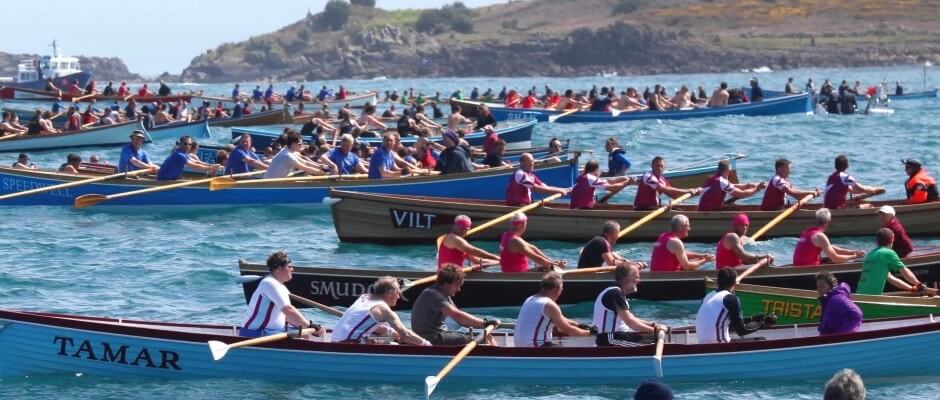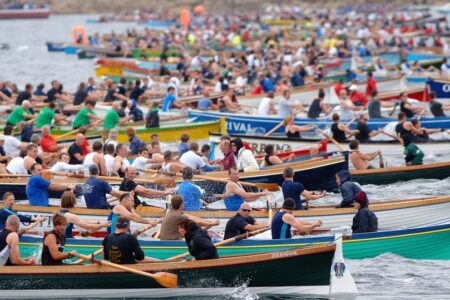If you visit Padstow over the summer months and spend any time beside the Camel Estuary, there’s a good chance you’ll see a Gig racing team in action. Pilot Gigs, to give the boats their full name, aren’t hard to spot: these wooden vessels are over thirty feet long and often painted in vibrant colours. The six-strong crews aren’t on the water for a joyride though, these are heavy boats, weighing a third of a tonne that must be hauled over distances of up to three miles. Gig racing requires expert rhythm and total fitness.
A very Cornish sport
There are Gig Racing clubs and events all over the world, but this distinctive form of rowing originated in Cornish waters in the 17th century. The enduring appeal of the sport is closely connected to a maritime history that is every bit as compelling as the race itself. Gigs were originally built to ferry local pilots to ships as they approached land through often dangerous waters.
Pilots were in high demand for their expertise in navigating hidden obstacles in the sea, particularly during stormy weather. For this reason, Gigs had to be sturdy and capable of tackling the roughest of waters. Speed was of the essence, as there was often more than one team competing to win the job – the first to reach an approaching ship would secure the work.
Intense competition
The competition was keen and sometimes pilots would receive a tip off about a ship’s approach. Trying not to alert other crews, rowers would slide socks over their boots, allowing them to creep silently through the village in the early hours as their rivals slept!
It wasn’t long before Gig teams began to compete for sport and money. By the 1850s, a successful boat could win up to £12 on a single race – a handsome prize shared between a team of six.
Decline and revival
After rowing Gigs were replaced by motor boats, the sport continued in Cornish waters. But by the 1970s it was in terminal decline, with many of the old Gigs in serious need of restoration. The foundation of the Cornish Pilot Gig Association in the 1980s helped to revive the sport for a new generation and for the first time created strict specifications for competing boats.
Model boats
Over the next decade, dozens of clubs opened, racing boats that were based on the design of a surviving Gig from 1838: the ‘Treffry’ was a six-oared rowing boat built from Cornish narrow leaf elm and is still sailed by the Newquay Rowing club. Construction of these sturdy vessels is not cheap though, and clubs understandably take great pride in maintaining and racing their prized vessels.
A modern spectacle
Today the sport goes from strength to strength. The World Pilot Gig Championships takes place each year on the first May bank holiday weekend in the waters around the Isles of Scilly. Hundreds of crews take part in this spectacular event, with thousands of spectators attending from all over the world, making it the busiest weekend of the year on Scilly.
Closer to Kilden Mor, the Newquay Rowing Club hosts its annual county championships throughout September. And if you’re interested in trying out, many clubs, including at Padstow, offer novice rowing sessions throughout the year.


